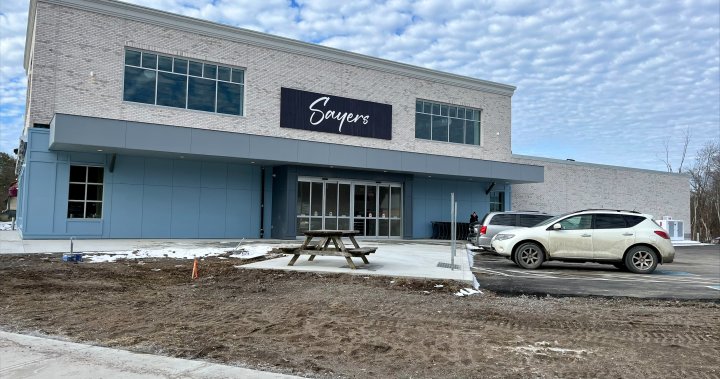Construction to revamp Mackenzie King Park has started and the first spot to get a makeover is the chalet.
On Wednesday, workers were already replacing some of the bricks from the façade. There are also plans to improve the lighting, create a space for concerts and build a hockey arena.
“It’s an investment of more than $9 million,” Côte-des-Neiges-NDG borough mayor, Gracia Kasoki Katahwa, explained.
One part of the upgrade that continues to stir debate, however, is that of replacing the grass on the soccer fields with artificial turf. Those who oppose it argue it’ll add to the heat island effect in warmer months.
“On the field, there is up to a 16-degree increase,” opposition city councillor for the Snowden district pointed out. “So, when it’s 30 degrees outside, it is 46 degrees for our kids on this field, which makes it unusable.”
Which he, and others, believe would cancel any advantage of using artificial turf. Residents, like Claire Vasseur, also worry about the chemicals in the turf.
Breaking news from Canada and around the world
sent to your email, as it happens.
“Synthetic fields are not healthy, especially for the kids,” she stressed. “This is my main concern.”
A third pre-occupation is that since artificial grass doesn’t absorb water, heavy rains could drain into the streets and risk flooding in the area, worsening an existing problem.
According to Katahwa, the decision came down to balancing ecological needs against those of vulnerable communities. She pointed out that kids in the area don’t have enough durable playing fields. She agrees with some of the arguments against artificial grass but says mitigation plans are being implemented.
“We’re going to transform the park into a sponge park, meaning that there will be some strategy to make sure that the water is retained into the park and not into the streets and eventually into people’s homes,” she told Global News.
The borough also plan to get rid of much of the concrete pavement, create a dry river into which water will flow after heavy rains and plant more trees.
Updated guidelines issued by Montreal Public Health last month say the health risks to using artificial turf are “insignificant or negligible because the exposure of individuals (all exposure scenarios combined) is not sufficiently significant. However, uncertainties have been raised in the literature and more studies are needed to address them and improve understanding of health risks.”
The guidelines also caution that in deciding between natural or artificial grass, a number of factors aside from health, must be balanced, like “equitable access to play areas and green spaces, environmental impacts (biodiversity, microplastic pollution, etc.), climate change and heat islands, the installation of resilient infrastructure and the vulnerability of populations as well as the preferences of the local population.”
What some are waiting to see is whether the borough’s decision to go ahead with artificial turf has indeed, struck the right balance. Construction is expected to wrap up in 2026.




